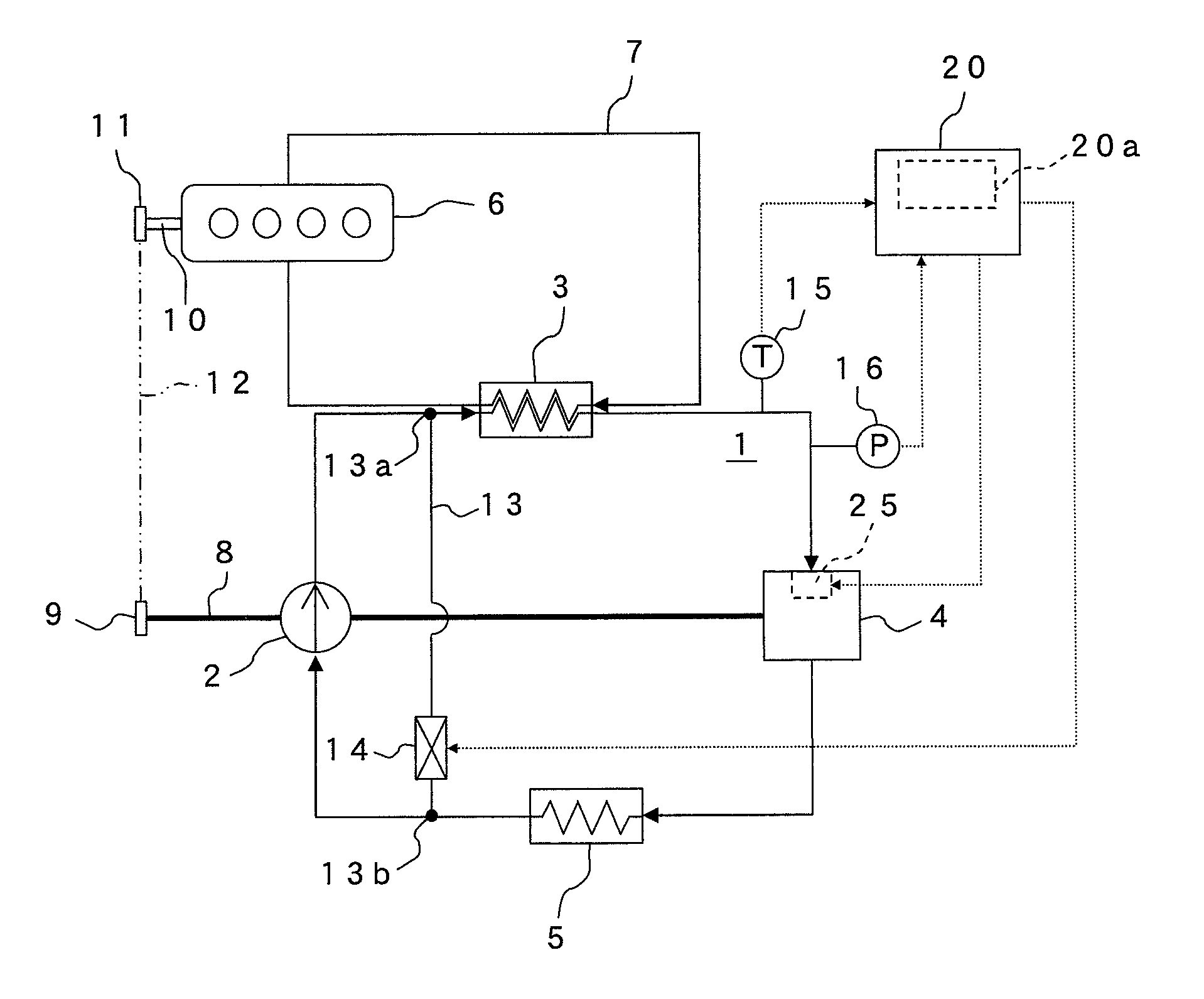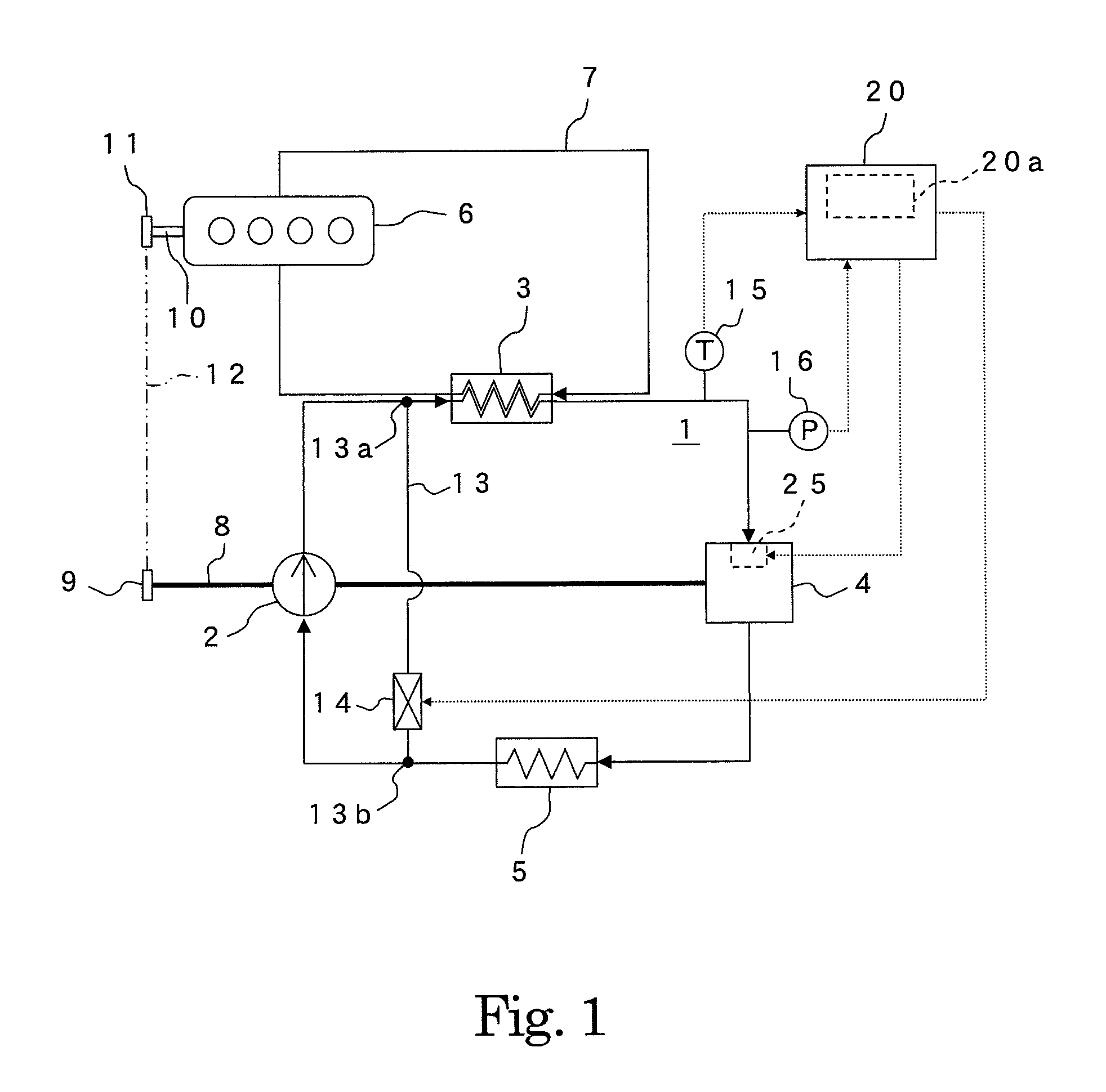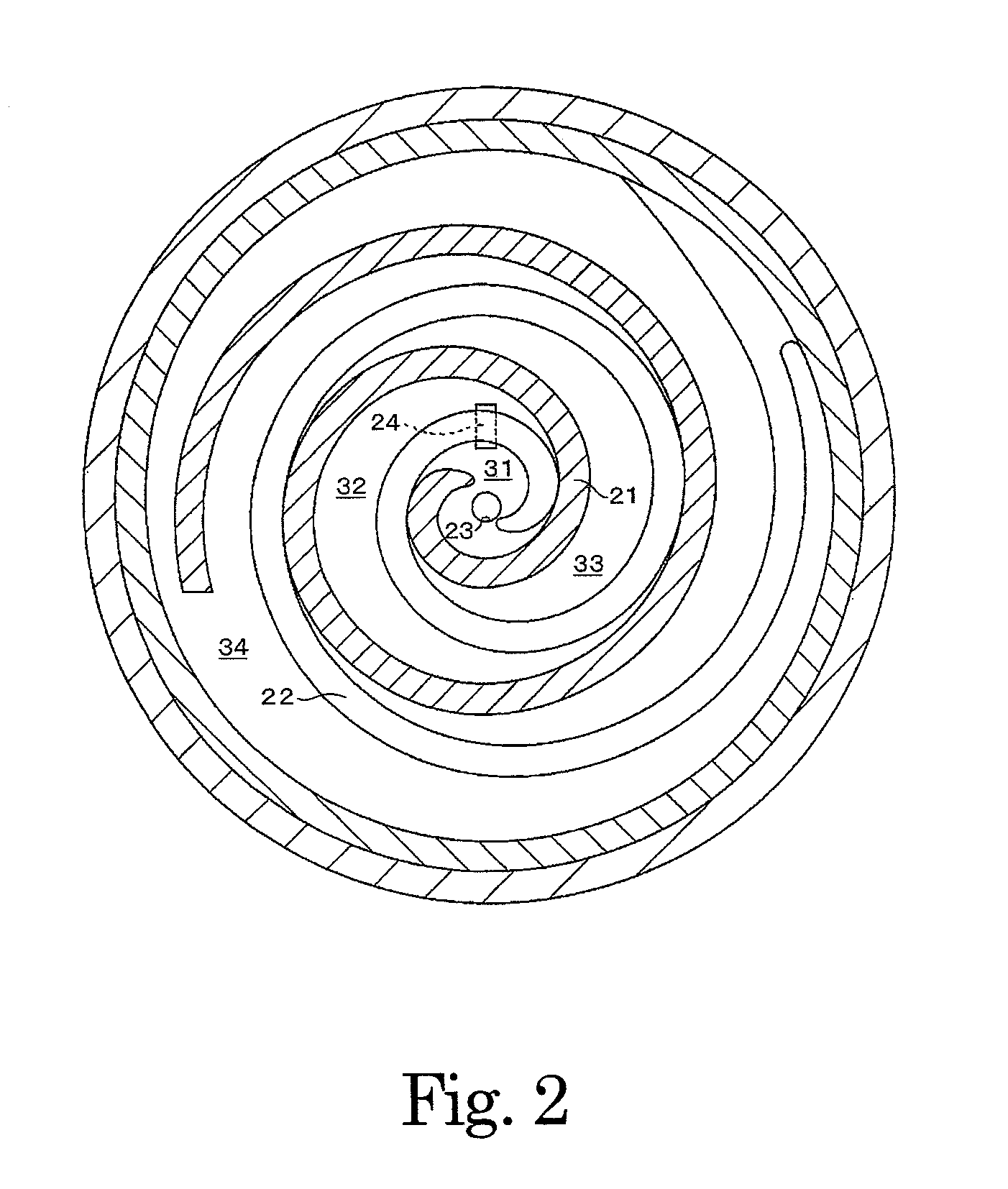Vehicle waste heat recovery device
a technology of waste heat recovery and vehicle, which is applied in the direction of machines/engines, soldering devices, auxilary welding devices, etc., can solve the problems of reduced density of working fluid, limited boiler performance, and limited mass flow rate of working fluid, so as to achieve the effect of reducing thermal efficiency
- Summary
- Abstract
- Description
- Claims
- Application Information
AI Technical Summary
Benefits of technology
Problems solved by technology
Method used
Image
Examples
first embodiment
[0016]As shown in FIG. 1, a vehicle waste heat recovery device according to a first embodiment includes a Rankine cycle 1 constituted by a pump 2, a boiler 3, an expander 4 which is a scroll expander, and a condenser 5. The boiler 3 is a heat exchanger that absorbs waste heat from a vehicle, for example heat contained in cooling water 7 after cooling an engine 6, into a coolant (a working fluid) circulating through the Rankine cycle 1. The pump 2 and the expander 4 share a single drive shaft 8. A pulley 9 is provided on one end of the drive shaft 8, and a belt 12 is wrapped around the pulley 9 and a pulley 11 provided on a crankshaft 10 of the engine 6.
[0017]FIG. 2 shows an upper sectional view of an expansion mechanism portion of the expander 4. A spiral-shaped fixed scroll 21 is fixed within the expansion mechanism portion, and a turning scroll 22 is provided to be capable of turning relative to the fixed scroll 21 while meshed thereto. When the turning scroll 22 turns, the turnin...
second embodiment
[0027]Next, a vehicle waste heat recovery device according to a second embodiment of the present invention will be described. Note that in the following embodiments, identical symbols to the reference symbols used in FIGS. 1 to 3 indicate identical or similar constitutional elements, and detailed description of these elements has been omitted.
[0028]The vehicle waste heat recovery device according to the second embodiment of the present invention differs from that of the first embodiment in that only the expander 4 is coupled to the engine 6 to be capable of transmitting power thereto.
[0029]As shown in FIG. 4, the other end of the drive shaft 8 having the pulley 9 on one end is coupled to a rotary shaft, not shown in the drawing, of the expander 4. The pump 2 is driven by a motor 60. The motor 60 is electrically connected to the ECU 20. All other constitutions are identical to the first embodiment, except that the bypass passage 13 and the flow control valve 14 (see FIG. 1) of the fi...
third embodiment
[0031]Next, a vehicle waste heat recovery device according to a third embodiment of the present invention will be described.
[0032]The vehicle waste heat recovery device according to the third embodiment of the present invention differs from that of the first embodiment in the form of the intake volume varying assembly.
[0033]As shown in FIG. 5A, in the sub-port 24, a fixed plate 41 is fixed to an end portion on side opposite the side on which the respective expansion spaces exist, and one end of a spring 42 is connected to the fixed plate 41. A spool 43 is connected to another end of the spring 42. When the spool 43 is brought into contact with the turning scroll 22 by an elastic force of the spring 42, the expansion space 31 and the expansion space 32 separate. The elastic force of the spring 42 is adjusted such that when the set pressure P1 serving as a threshold having a smaller value than the upper limit pressure P0 acts on the spool 43, the spring 42 is compressed. All other con...
PUM
 Login to View More
Login to View More Abstract
Description
Claims
Application Information
 Login to View More
Login to View More - R&D
- Intellectual Property
- Life Sciences
- Materials
- Tech Scout
- Unparalleled Data Quality
- Higher Quality Content
- 60% Fewer Hallucinations
Browse by: Latest US Patents, China's latest patents, Technical Efficacy Thesaurus, Application Domain, Technology Topic, Popular Technical Reports.
© 2025 PatSnap. All rights reserved.Legal|Privacy policy|Modern Slavery Act Transparency Statement|Sitemap|About US| Contact US: help@patsnap.com



